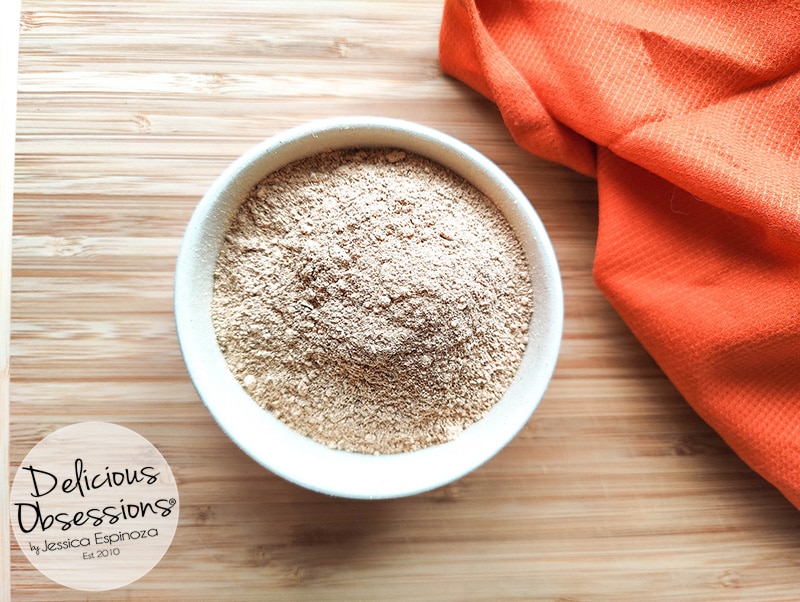FTC Disclosure: Delicious Obsessions may receive comissions from purchases made through links in this article. As an Amazon Associate I earn from qualifying purchases.Read our full terms and conditions here.
If you’ve been looking for a little something that will elevate almost any savory dish, look no further than this savory umami powder. This savory umami powder is the very thing you didn’t know your cooking needed. But once you start using it you’ll never want to be without it.
I love cooking savory foods. I love cooking sweet foods too. As a matter of fact, I’m not really all that picky when it comes to what I love cooking or baking. But when it comes to savory food, I am always looking for a way to create the deepest, richest flavor possible.
There are a bunch of different ways to boost the flavor of savory dishes. Depending on what you’re making, a little splash of this, or a sprinkle of that, or a dollop of the other thing can make all the difference in the richness of the end product.
For example, adding a little cocoa powder to your beef chili. Or a splash of Worcestershire or soy sauce to your soups and stews. Or a sprinkle of this savory umami powder to pretty much anything.
What is Umami
Technically umami has been around since 1907 when the food trend was established by a Japanese scientist. But it was pretty much ignored in the rest of the world. However, several years ago, you may remember first hearing about umami here in the States. It was all the rage for a while and was defined as being the fifth gate after sweet, sour, salty, and bitter. In Japanese, it literally means deliciousness.
Side note: There’s an interesting article on the BBC website about the “Man Who Discovered Umami” that you can read here if you’re into that kind of thing. 🙂
According to Wikipedia:
Umami, or savoriness, is one of the five basic tastes. It has been described as savory and isracteristic of broths and cooked meats. People taste umami through taste receptors that typically respond to glutamates and nucleotides, which are widely present in meat broths and fermented products. Glutamates are commonly added to some foods in the form of monosodium glutamate (MSG), and nucleotides are commonly added in the form of inosine monophosphate (IMP) or guanosine monophosphate (GMP). Since umami has its own receptors rather than arising out of a combination of the traditionally recognized taste receptors, scientists now consider umami to be a distinct taste. Foods that have a strong umami flavor include meats, shellfish, fish (including fish sauce and preserved fish such as maldive fish, sardines, and anchovies), tomatoes, mushrooms, hydrolyzed vegetable protein, meat extract, yeast extract, cheeses, and soy sauce. (source)
There’s a reason that MSG is used in so many restaurants and manufactured foods. It’s a flavor enhancer and makes all flavors, especially savory ones, really sing when they land on your taste buds. But MSG is also terrible for you and many people, myself included, have pretty severe allergies to it. It makes me sick as a dog and I have to be careful at certain places because I always ask and have been told before that places don’t use MSG but when I get home and am super sick, I know I’ve been lied to.
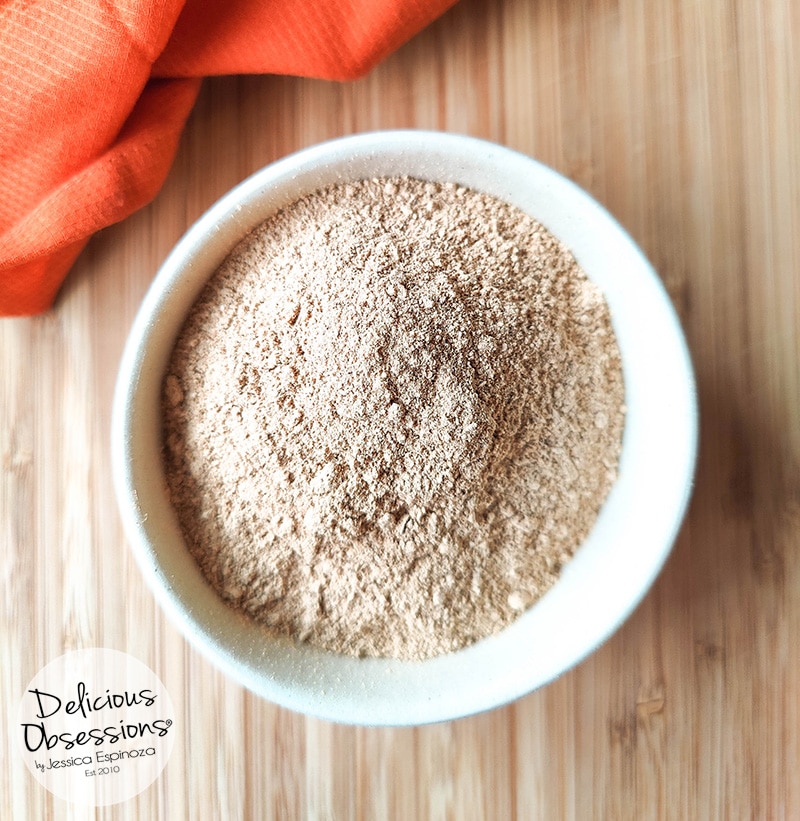
Why Mushrooms Add Umami to Your Recipes
For those of us who are avoiding MSG but want to really boost the flavor of our cooking, mushrooms are a great addition. Any mushroom will work at enhancing the flavor, but as a rule of thumb, the darker the mushroom, the richer the umami flavor.
The reason mushrooms work so well in this application is that the drying process actually increases the glutamate in the mushrooms, which in turn gives them the richer, umami flavor.
Some people are super sensitive to glutamates, so if this is you then this recipe might not be a good fit for you. Naturally occurring glutamates don’t tend to be a problem for most people unless they have a sensitivity or consume large amounts of high glutamate food. If you are eating a generally healthy diet that is well-rounded and limits processed and refund foods, some extra glutamates from dried mushrooms should not cause any issues for you.
Fun fact: glutamates are naturally high in breast milk, so that may explain our love of the umami flavor and foods that contain glutamates. (source)
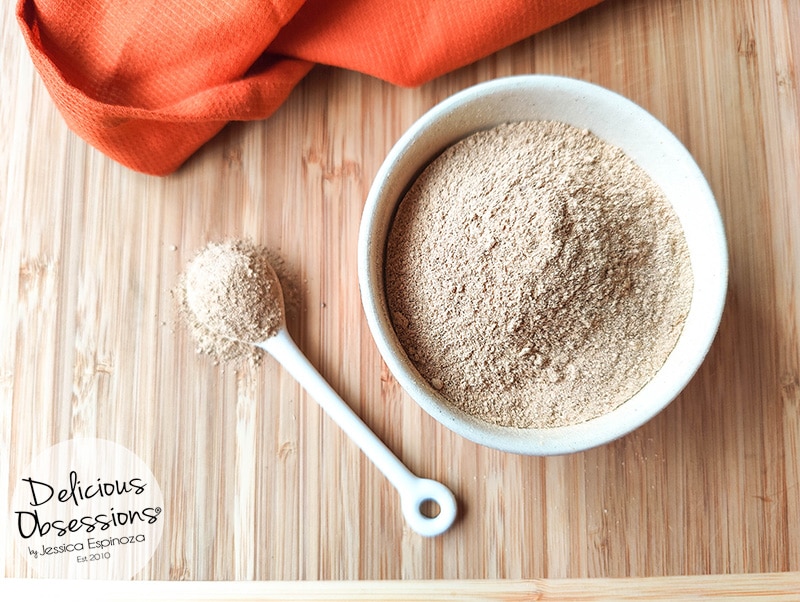
Creating Your Savory Umami Powder
Creating this powder at home is so easy. The only equipment you will need is a spice grinder or a coffee grinder. I have two coffee grinders at home that I use for grinding my herbs, spices, and mushrooms. The flavor of fresh ground spices and herbs is much better than buying it already ground (although you certainly can do that in a pinch).
If you plan on boosting your cooking experience, I strongly encourage you to get a spice grinder or a coffee grinder. Trust me, it’s a worthy investment. Here are a few I like:
- KRUPS Silent Vortex Electric Grinder for Spices, Dry Herbs, and Coffee
- Mr. Coffee Simple Grind Coffee Grinder
- Cuisinart Grind Central Coffee Grinder
For my savory umami powder, I like to use a blend of dried mushrooms. You can often find dried mushrooms at your local health food store, but if you can’t, you can most definitely order them online. Here are a few trustworthy brands that I like:
- Mycological Dried Organic Mushrooms
- OliveNation Organic Dried Mushrooms
- Terra Dolce Organic Dried Mushrooms
If you have specific mushrooms you like, then use those. Any dried mushroom will work in this recipe.
How to Use Your Savory Umami Powder
You can use this powder in any savory dish you make. Please keep in mind that dried mushrooms should be cooked before consumption, so this is a powder that you add during cooking, not a powder you sprinkle on at the table like you would salt.
How much you add is totally dependent on your specific tastes. I am a big fan of mushroom flavor so I tend to be a bit heavy-handed with it. But if you want just a little something extra you could definitely use less. I’d recommend starting with a teaspoon or two per recipe and then working your way up from there. You add this powder in at the same time you would add any other herbs and spices in the recipe.
Here are a few recipes that this savory umami powder tastes great in. At some point, I will go back through my older recipes and get them updated with this new ingredient.
- Hearty Beef and Cabbage Soup
- Cheesy Chicken & Broccoli Soup in the Instant Pot
- Ground Beef with Kale and Mushrooms
- Slow Cooker Beef Chili
- Slow Cooker Paleo Chicken Stew
- Slow Cooker Beef Shanks with Garlic and Herbs
- Slow Cooker Rosemary Roast
- Stuffed Cabbage (Cabbage Dolmas)
- The Easiest (and Most Delicious) Crock Pot Beef Ever
- Hearty Grass-fed Beef and Vegetable Stew
- Basic Grass-fed Beef Meatloaf
Okee dokee! Ready to get cooking? Let’s go!
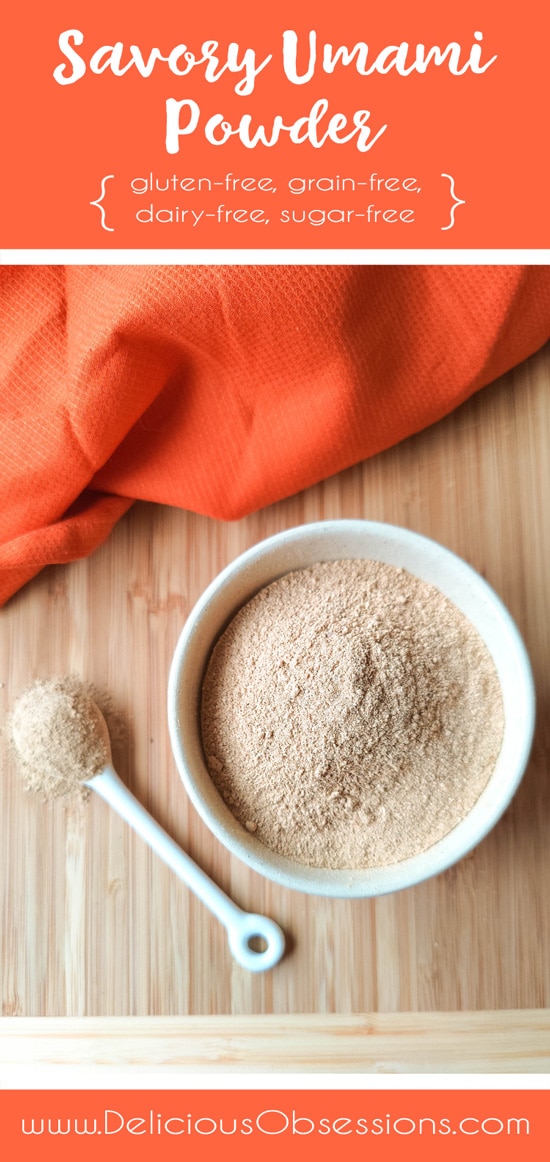
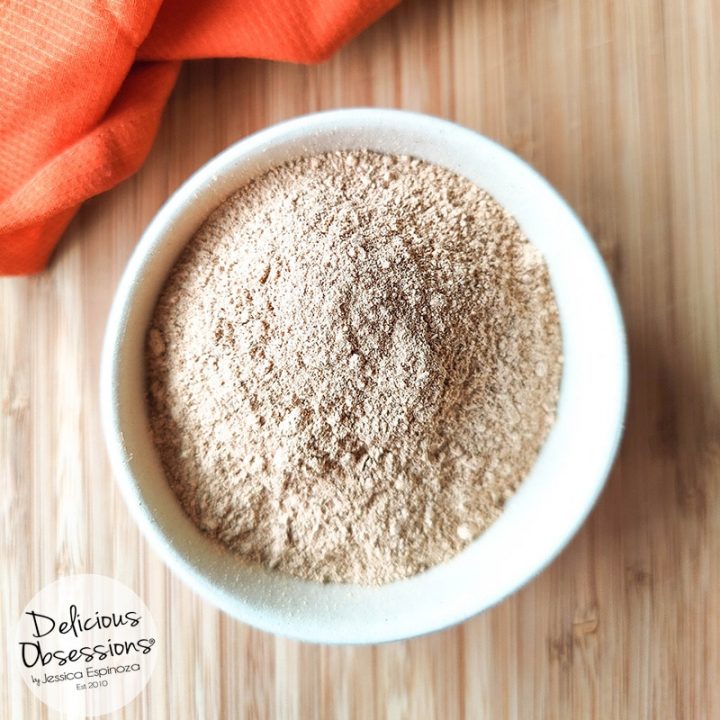
Savory Umami Powder
If you've been looking for a little something that will elevate almost any savory dish, look no further than this savory umami powder. This savory umami powder is the very thing you didn't know your cooking needed. But once you start using it you'll never want to be without it.
Ingredients
- 1 oz. Dried Porcini Mushrooms
- 1 oz. Dried Chanterelle Mushrooms
- 1 oz. Dried Cremini Mushrooms
- 1 tbsp. Garlic Powder (not granulated)
- 1 tbsp. Onion Powder (not granulated)
Instructions
- Grind your dried mushrooms in your spice grinder or coffee grinder until powdered and smooth. Depending on the size of your grinder and how much you are making, you may need to do this in batches.
- Combine the ground mushrooms, garlic powder, and onion powder in a glass jar and shake well until completely combined.
- Store in a cool dry place and use in your favorite savory dishes.
Notes
- You can use ANY dried mushroom you like, so don't feel tied to the ones I have listed in the ingredinets. Feel free to experiment!
- This recipe can be made as big or small as you like. Feel free to double, triple, etc. if you want to make a big batch all at once.
- Remember that dried mushrooms need to be cooked before consuming so make sure you add this savory umami powder while cooking, not as a garnish at the table.
- See notes in the main blog post about brands of dried mushrooms I trust and what spice/coffee grinders I like.
Recommended Products
As an Amazon Associate and member of other affiliate programs, I may earn a small commission from qualifying purchases.
-
 KRUPS Silent Vortex Electric Grinder for Spice, Dry Herbs and Coffee, 12-Cups, Black
KRUPS Silent Vortex Electric Grinder for Spice, Dry Herbs and Coffee, 12-Cups, Black -
 Frontier Co-op Onion, White Powder, Certified Organic, Kosher, Non-irradiated | 6.14 oz Resealable Bag | Allium cepa
Frontier Co-op Onion, White Powder, Certified Organic, Kosher, Non-irradiated | 6.14 oz Resealable Bag | Allium cepa -
 Frontier Co-op Garlic Powder, Certified Organic, Kosher | 7.76 oz Resealable Bag
Frontier Co-op Garlic Powder, Certified Organic, Kosher | 7.76 oz Resealable Bag -
 Terra Dolce Organic Maitake Mushrooms, 0.5 Ounce
Terra Dolce Organic Maitake Mushrooms, 0.5 Ounce -
 Terra Dolce Organic Chanterelle Mushrooms, 0.75 Ounce
Terra Dolce Organic Chanterelle Mushrooms, 0.75 Ounce -
 Terra Dolce Organic Porcini Mushrooms, 1 Ounce
Terra Dolce Organic Porcini Mushrooms, 1 Ounce
Nutrition Information:
Yield: 16 Serving Size: 1Amount Per Serving: Calories: 1Total Fat: 0gSaturated Fat: 0gTrans Fat: 0gUnsaturated Fat: 0gCholesterol: 0mgSodium: 0mgCarbohydrates: 0gFiber: 0gSugar: 0gProtein: 0g
IMPORTANT! PLEASE READ!!! This website provides approximate nutrition information for convenience and as a courtesy only. Nutrition data is gathered from Nutritionix and we often find their calculations to be slightly inaccurate based on the whole food ingredients we use on this site. Nutrition information can vary for a recipe based on many factors. We strive to keep the information as accurate as possible, but make no warranties regarding its accuracy. We encourage readers to make their own calculations based on the actual ingredients used in your recipe, using your preferred nutrition calculator.

